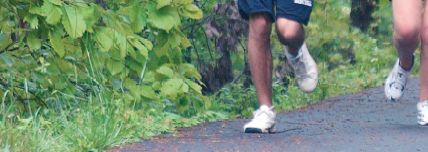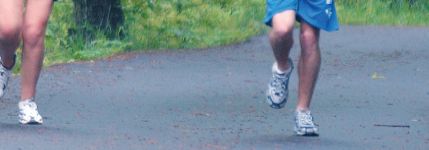
To run faster in the race, you need to run faster in some key workouts. The faster pace of both the workouts and the TT’s force the muscles, tendons, nerves, cardiovascular system, psyche, and spirit to gear up. The regularity of the workouts sets up a process that improves efficiency. You’ll also search for and find new resources needed to deal with the challenges not faced before.
800-Meter repeats are run 15 seconds faster than goal pace
You’ll see in the time goal schedules, a series of 800-meter workouts on non-long-run weekends. These are best done on a track (two laps). Each should be run 15 seconds faster than you’d like to run the same distance (approximately half a mile) in your goal race. Walk for the amount recommend in the training schedules.
Sustained speed—through an increase in the number of repetitions
The maximum benefit from speed sessions is at the end of the program. As you increase the number of 800-meter speed repetitions from 4 to 6, to 8 and beyond, you teach yourself how to keep going at your assigned pace, even when tired. To maintain speed when tired is the mission. The only way to prepare for this “race reality” situation is to do this during speed training. Speedwork teaches you and your legs that they can keep performing even when very tired. The result is that you won’t slow down as you would before you started doing the speedwork.

Longer runs maintain endurance—and improve your time
Your long runs will maintain or extend endurance, while you improve speed. Every week or two you’ll run a very slow longer run. Many runners improve their times through this long run as much as or more than from speed training. Both are important for maximum improvement.
Running form improves
Regular speed workouts stimulate your body to run more efficiently. On each workout, as you push into fatigue, your body intuitively searches for ways of continuing to move at the same pace without extraneous motion: lighter touch of the feet, direct foot lift, lower to the ground, quicker turnover. See the running form chapter for more details.
Watch out! Speedwork increases aches, pains and injuries
Speed training increases your chance of injury. Be sensitive to the areas on your foot, leg, muscles, etc., where you’ve had problems before—your weak links. Think back to the patterns of aches and pains that have caused you to reduce or stop exercise in the past. You can reduce injury risk significantly by taking a day or two off when one of these flares up, and by following the tips in the “aches and pains” chapter in this book.
